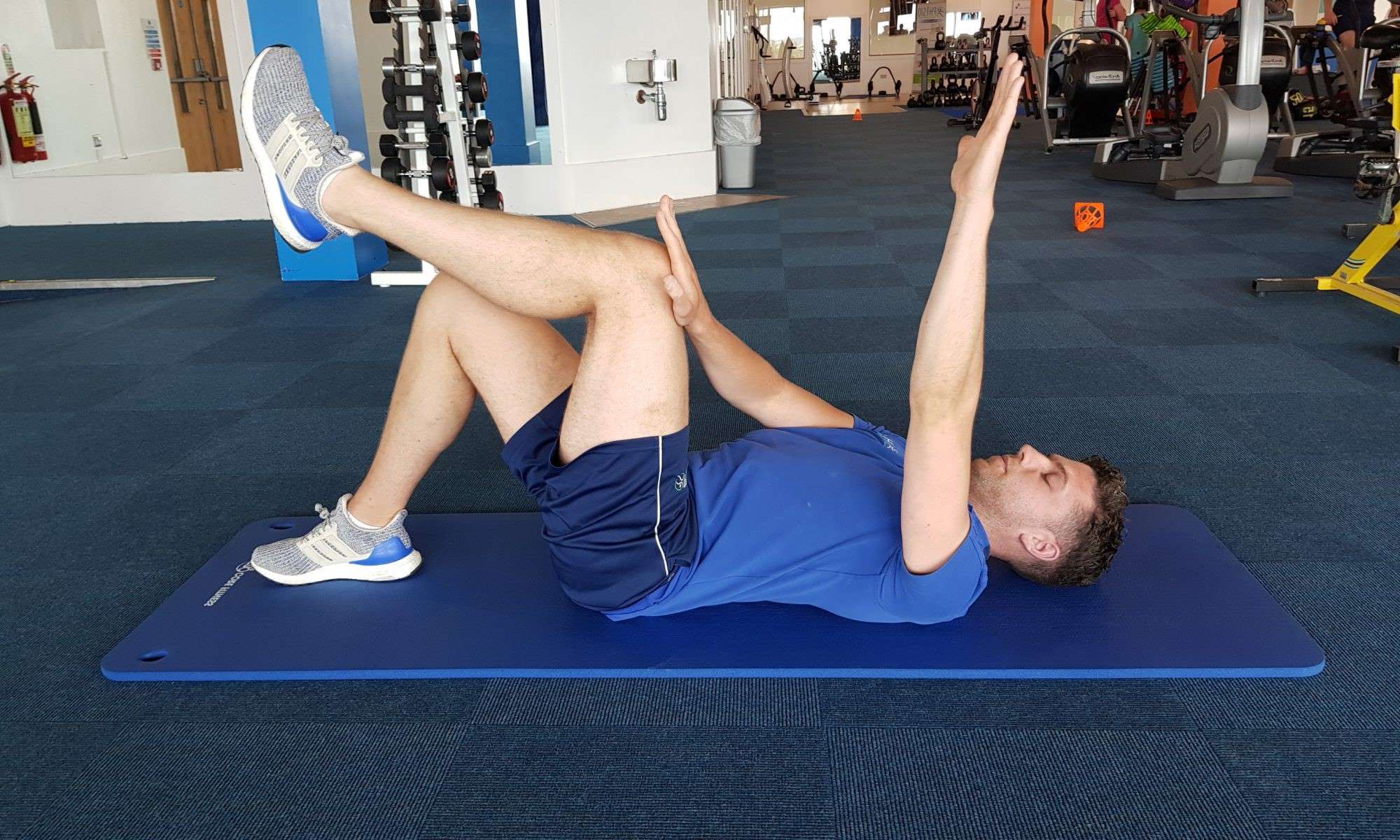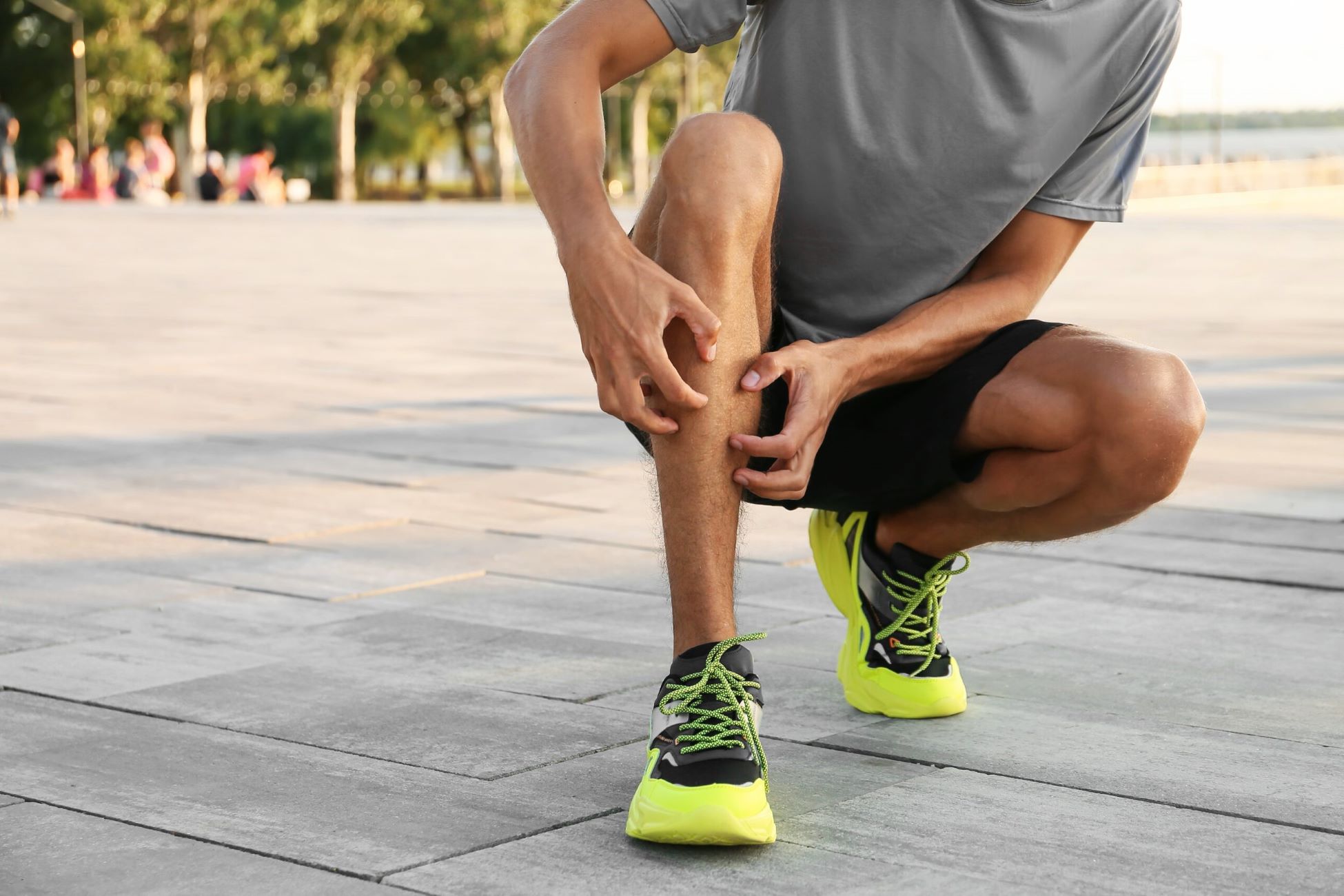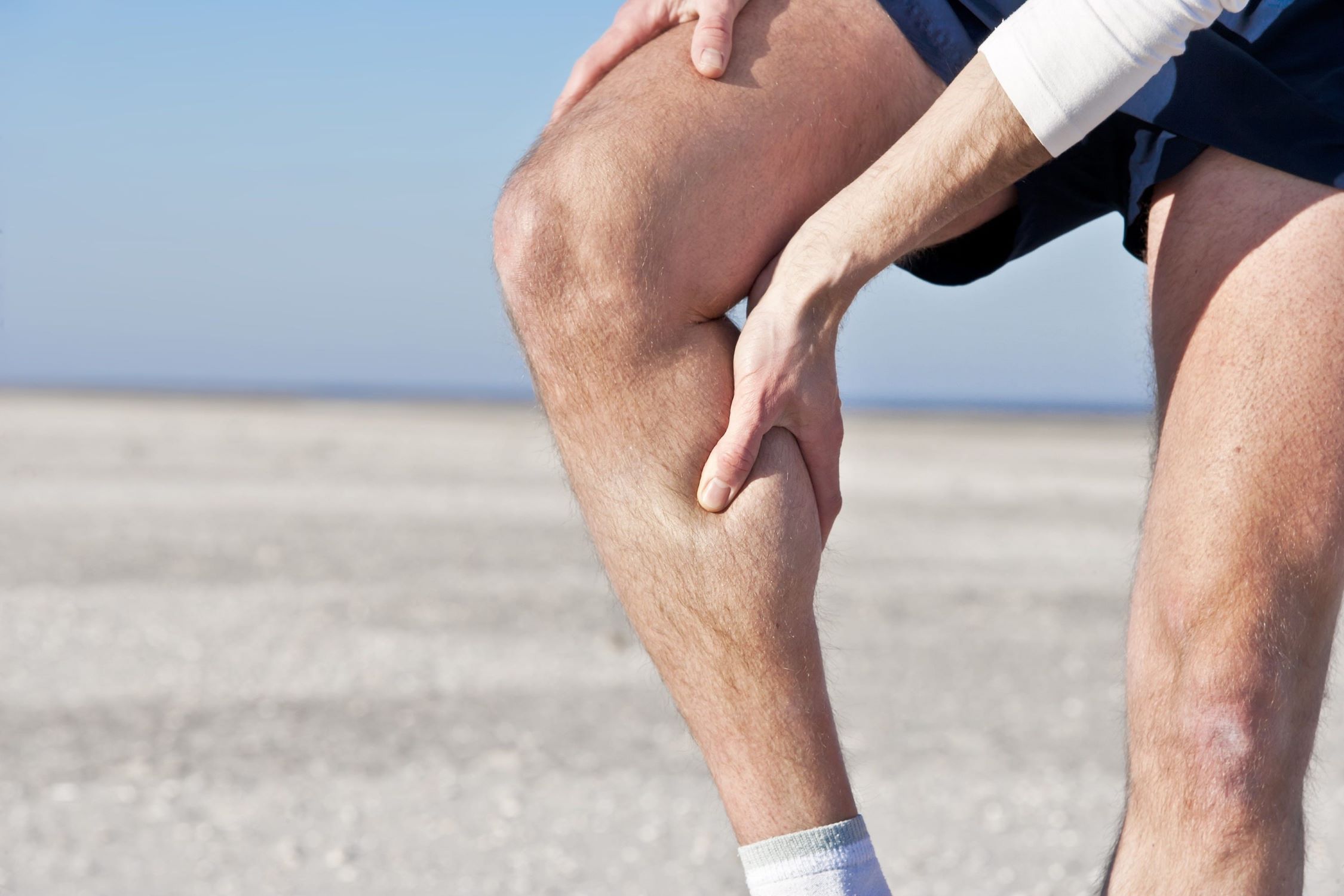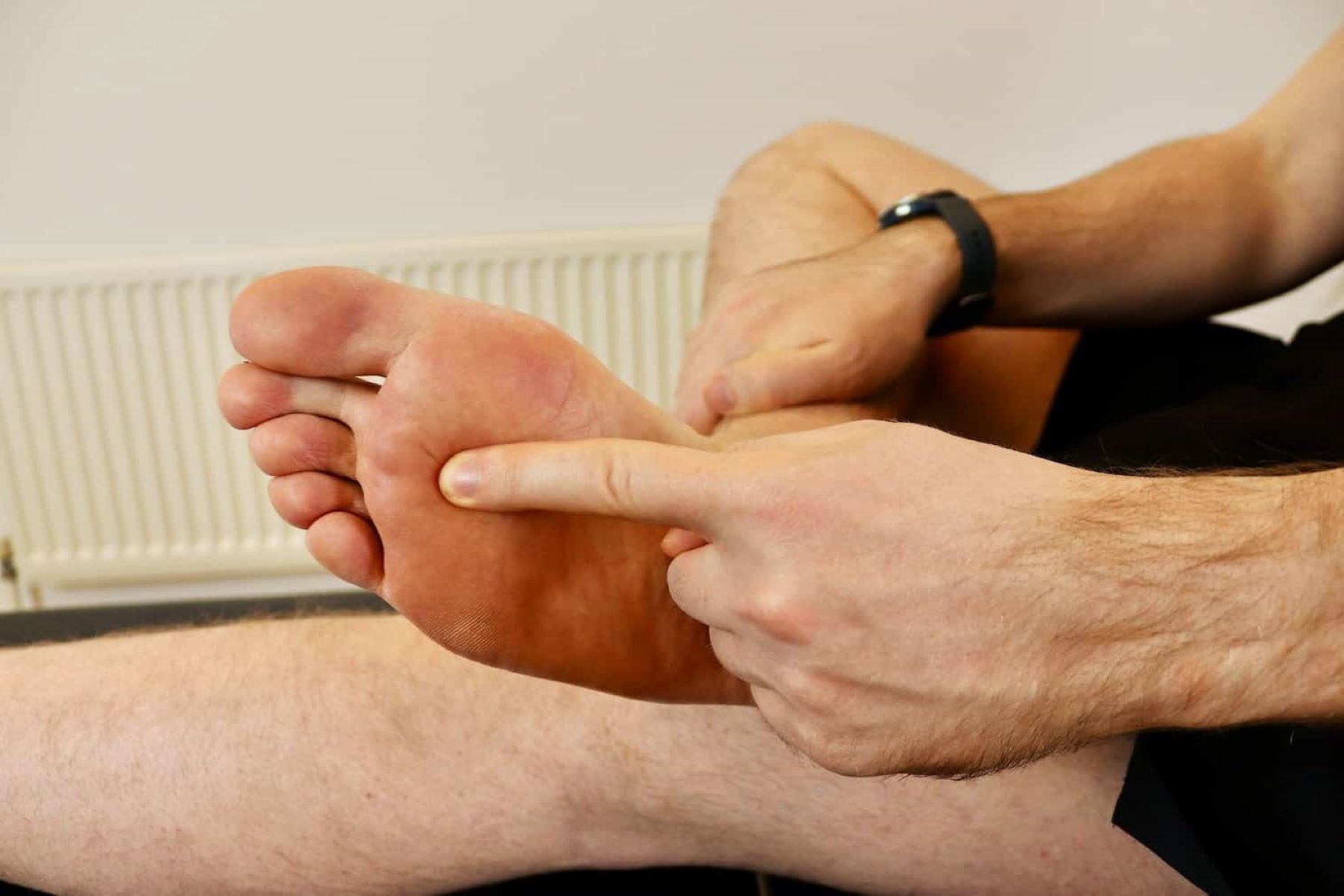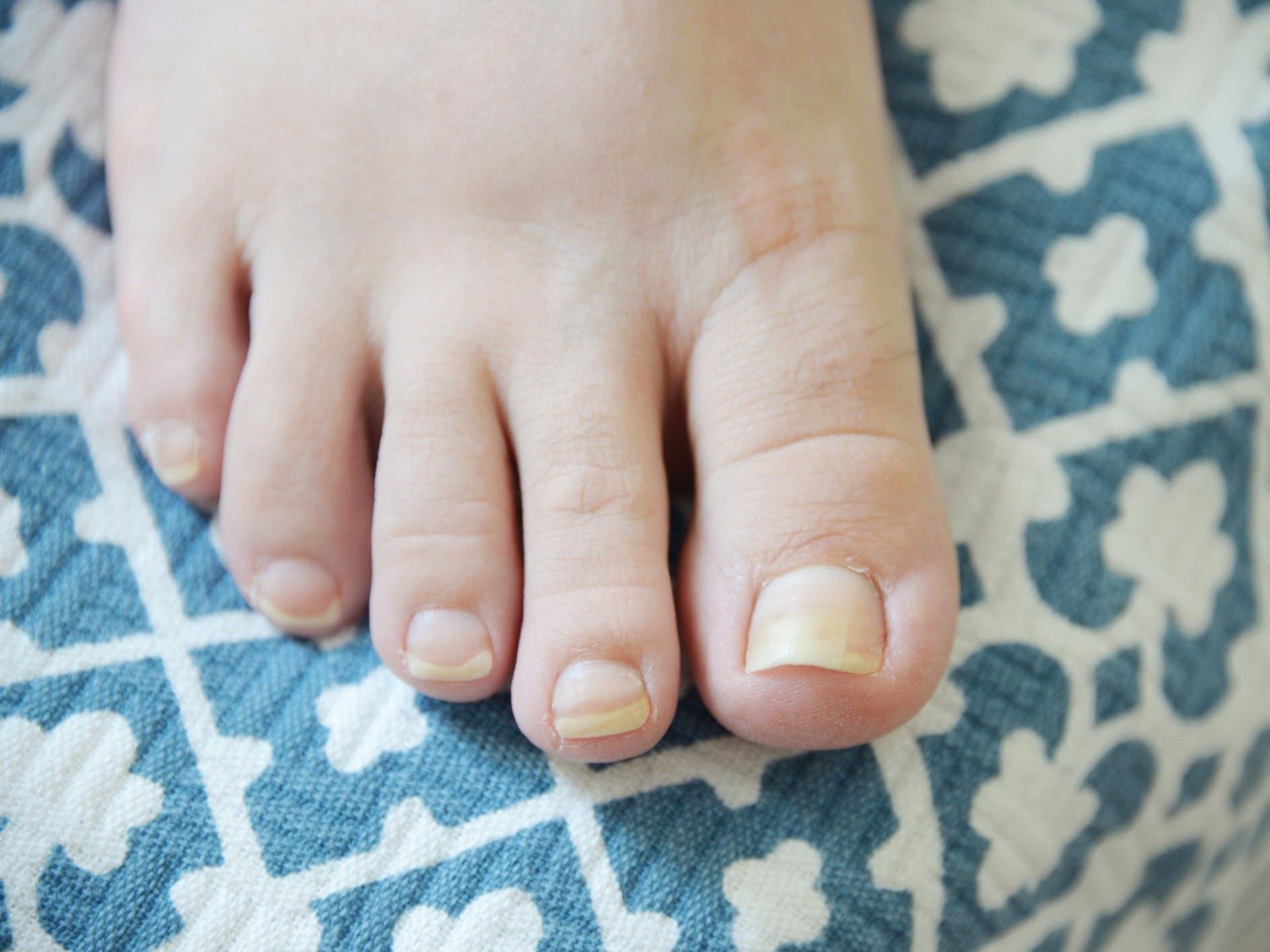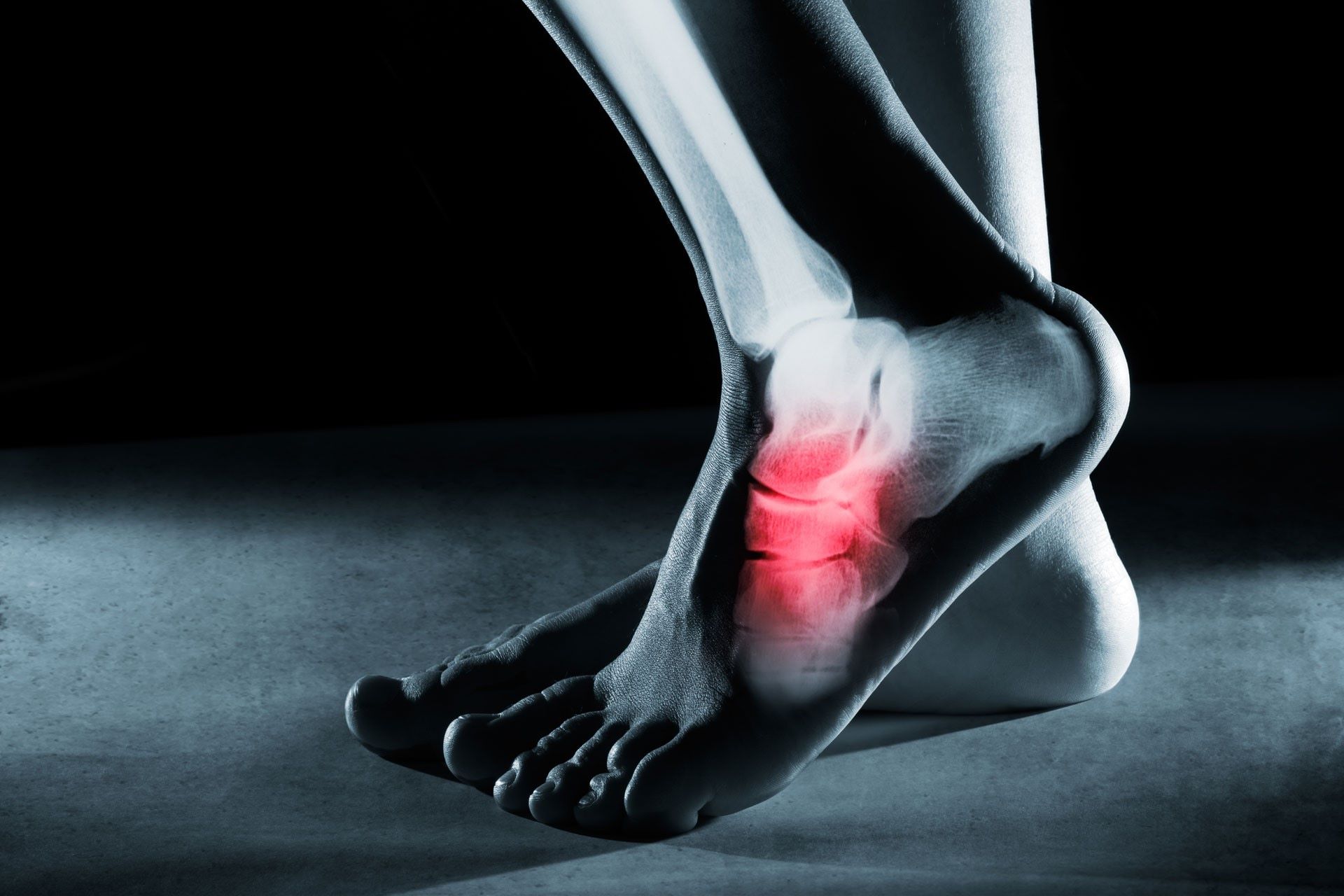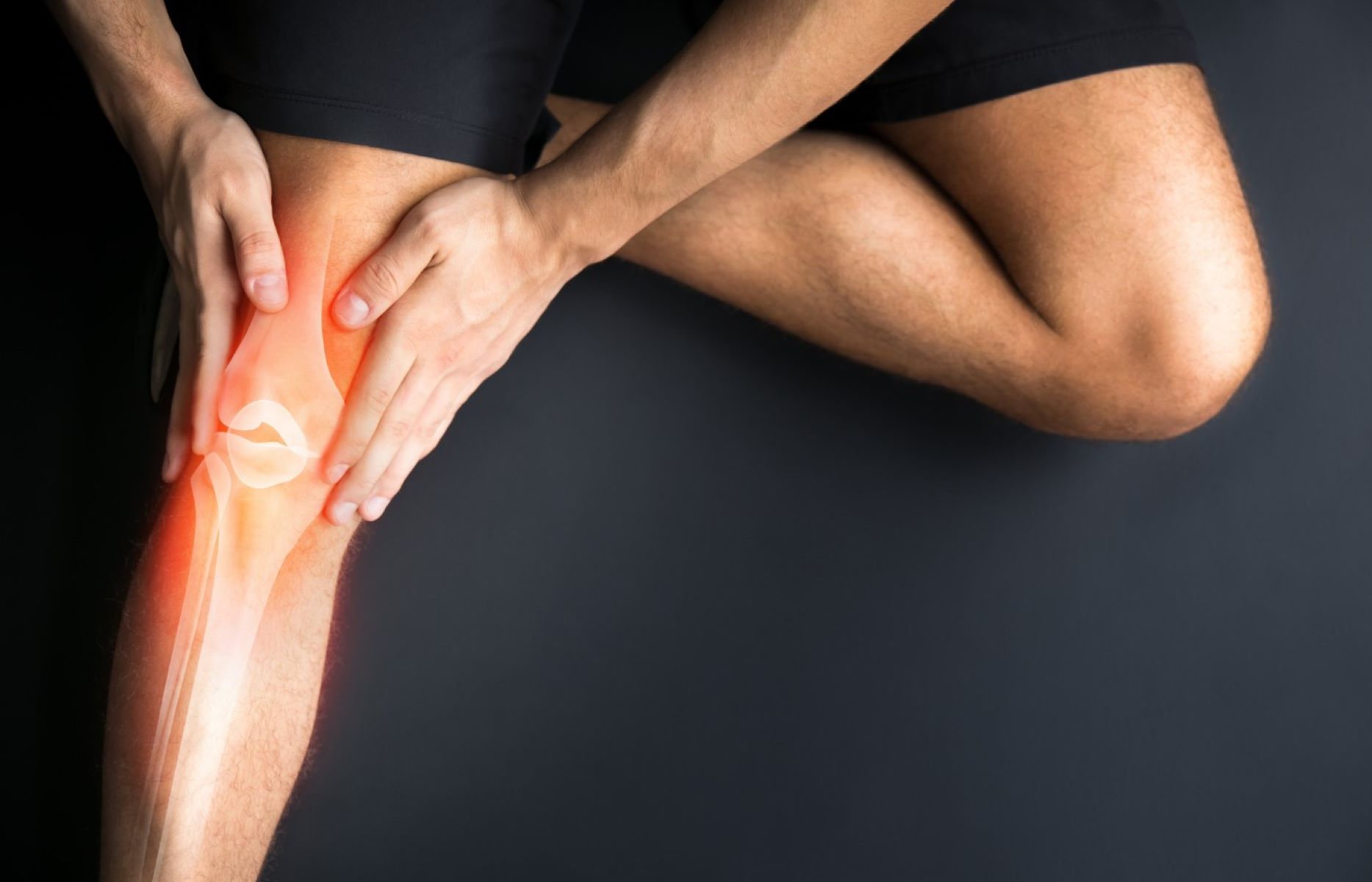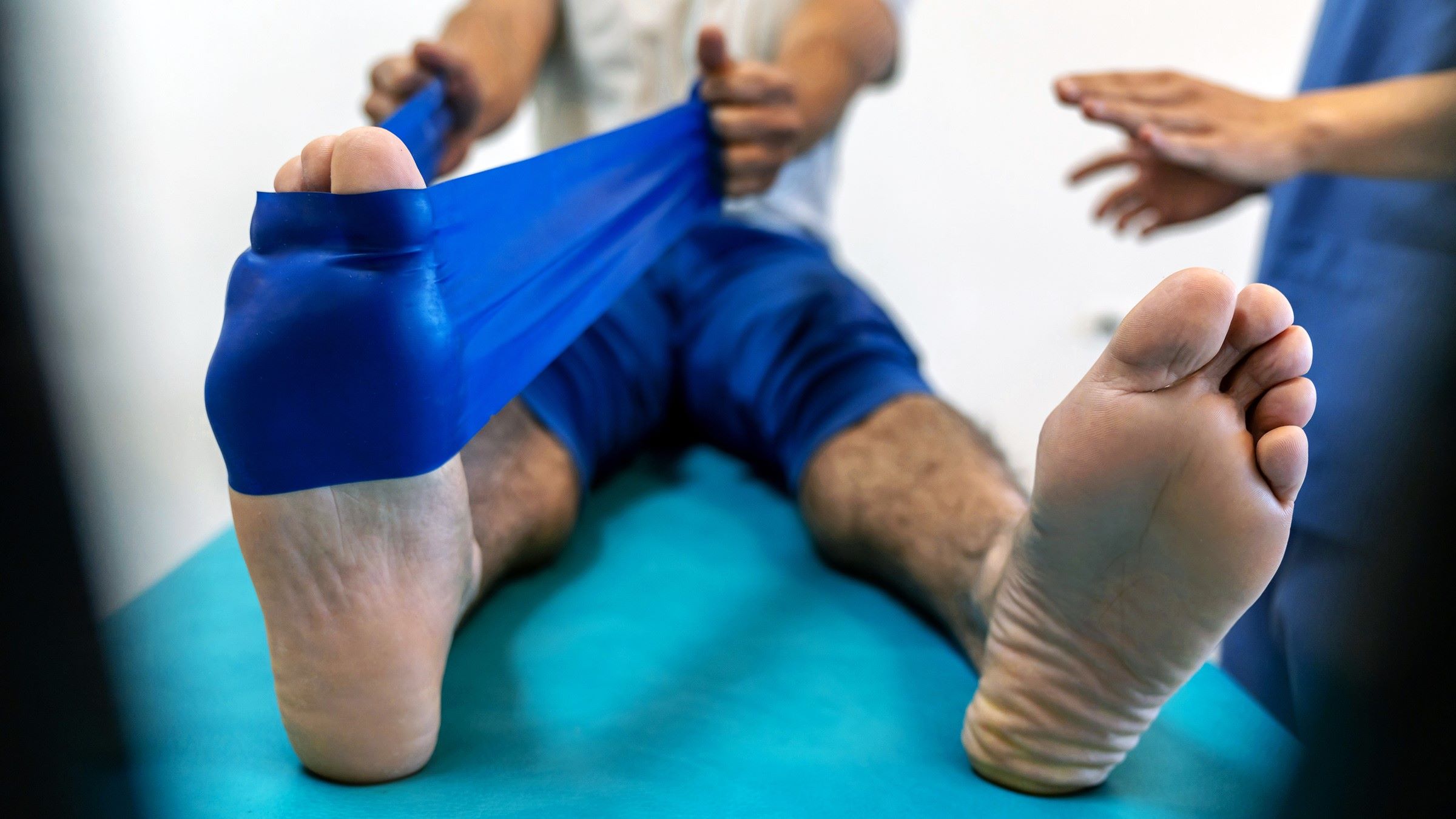Home>Health & Nutrition>Understanding The Causes Of Pins And Needles In The Foot
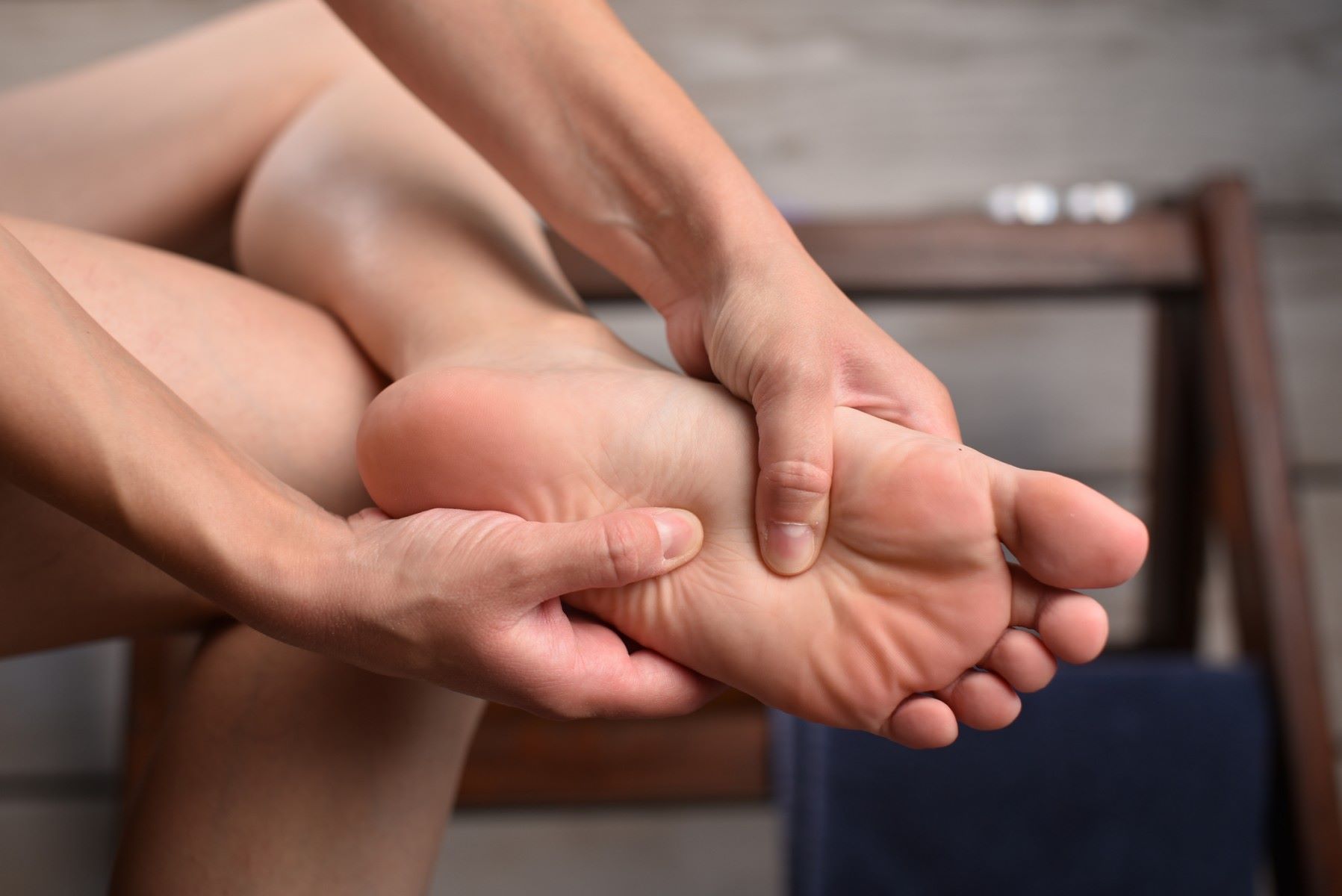

Health & Nutrition
Understanding The Causes Of Pins And Needles In The Foot
Published: February 20, 2024
Discover the common causes of pins and needles in the foot and how to address them. Learn more about foot health and nutrition to prevent discomfort.
(Many of the links in this article redirect to a specific reviewed product. Your purchase of these products through affiliate links helps to generate commission for Therunningadvisor.com, at no extra cost. Learn more)
Table of Contents
Introduction
Pins and needles in the foot can be an uncomfortable and concerning sensation. It often feels like a tingling or prickling that may come and go, or persist for an extended period. This sensation, also known as paresthesia, can affect individuals of all ages and may be indicative of various underlying health issues. Understanding the causes of pins and needles in the foot is essential for recognizing potential risks and seeking appropriate medical attention when necessary.
The foot is a complex structure comprising bones, muscles, ligaments, and nerves, all working in harmony to support the body and facilitate movement. The nervous system, including the peripheral nerves, plays a crucial role in transmitting sensory information from the foot to the brain. When this intricate network experiences disruptions or abnormalities, it can manifest as the sensation of pins and needles in the foot.
In this comprehensive guide, we will delve into the anatomy of the foot and the nervous system to gain a deeper understanding of how these components contribute to the experience of pins and needles. Furthermore, we will explore the common causes of this sensation, ranging from temporary factors such as sitting in a certain position for too long to more serious medical conditions. By shedding light on the potential risk factors and associated medical conditions, we aim to empower readers with the knowledge to recognize when to seek medical attention.
Moreover, we will discuss the available treatment options and preventive measures that can help alleviate the discomfort of pins and needles in the foot and reduce the likelihood of recurrence. By equipping individuals with this information, we hope to promote proactive self-care and encourage timely intervention when facing persistent or concerning symptoms.
Join us on this enlightening journey as we unravel the mysteries behind pins and needles in the foot, empowering you to take charge of your foot health and overall well-being.
Anatomy of the Foot and Nervous System
The foot is a marvel of biomechanical engineering, comprising a complex interplay of bones, muscles, tendons, ligaments, and nerves. This intricate structure serves as the foundation for our mobility, providing stability, flexibility, and propulsion. Understanding the anatomy of the foot is essential for comprehending the potential sources of discomfort such as pins and needles.
At the core of the foot's functionality lies a network of nerves that facilitate sensory perception and motor control. The peripheral nerves, including the tibial, sural, and deep peroneal nerves, play a pivotal role in transmitting signals between the foot and the central nervous system. These nerves are responsible for relaying sensory information, such as touch, temperature, and pain, from the foot to the brain, allowing us to perceive and respond to our environment.
Furthermore, the intricate web of nerves in the foot enables motor function, coordinating the intricate movements required for walking, running, and maintaining balance. The motor nerves communicate signals from the brain to the muscles, directing the precise contractions and relaxations necessary for coordinated movement.
The sensory nerves in the foot are equally vital, as they provide feedback to the brain about the foot's position, pressure distribution, and tactile sensations. This sensory feedback is crucial for maintaining balance and adjusting our gait to different surfaces and terrains.
The foot's anatomy also encompasses an array of sensory receptors, including mechanoreceptors, nociceptors, and thermoreceptors, which respond to mechanical stimuli, pain, and temperature, respectively. These receptors are distributed throughout the foot, allowing for the perception of various sensations and the initiation of appropriate motor responses.
In summary, the foot's anatomy and the intricate network of nerves within it form the foundation of our sensory perception, motor control, and overall mobility. Disruptions or abnormalities within this complex system can lead to sensations such as pins and needles, serving as a signal that warrants further investigation into potential underlying causes.
Understanding the interplay between the anatomy of the foot and the nervous system provides valuable insights into the potential origins of discomfort and serves as a springboard for exploring the common causes of pins and needles in the foot.
Common Causes of Pins and Needles in the Foot
Pins and needles in the foot can stem from a variety of factors, ranging from temporary, benign occurrences to underlying medical conditions. Understanding these common causes is crucial for identifying potential triggers and seeking appropriate interventions when necessary.
-
Prolonged Pressure: Sitting or standing in the same position for an extended period can compress the nerves in the foot, leading to temporary paresthesia. This often occurs when sitting cross-legged or wearing tight shoes that restrict blood flow to the feet.
-
Peripheral Neuropathy: This condition involves damage to the peripheral nerves, which can result from diabetes, vitamin deficiencies, infections, or exposure to toxins. Peripheral neuropathy can lead to persistent pins and needles sensations in the feet, often accompanied by numbness and tingling.
-
Nerve Compression: Conditions such as Morton's neuroma or tarsal tunnel syndrome can cause compression of the nerves in the foot, leading to discomfort and altered sensation. Nerve compression may result from structural abnormalities, repetitive stress, or inflammatory processes.
-
Poor Circulation: Reduced blood flow to the feet, often associated with conditions like peripheral artery disease or atherosclerosis, can lead to intermittent or chronic paresthesia. Poor circulation deprives the nerves of essential oxygen and nutrients, triggering abnormal sensations in the feet.
-
Sciatica: Compression or irritation of the sciatic nerve, often stemming from a herniated disc or spinal stenosis, can cause radiating pain, numbness, and tingling sensations that extend from the lower back down to the feet.
-
Foot Injuries: Trauma or injuries to the foot, such as fractures, sprains, or crush injuries, can disrupt the normal function of nerves, leading to temporary or persistent pins and needles sensations.
-
Inflammatory Conditions: Autoimmune disorders like rheumatoid arthritis or inflammatory conditions such as gout can trigger inflammation in the joints and tissues of the foot, potentially affecting the surrounding nerves and causing discomfort.
-
Medication Side Effects: Certain medications, including those used to treat cancer, HIV, or seizures, may have peripheral neuropathy as a side effect, leading to sensory disturbances in the feet, including the sensation of pins and needles.
By recognizing these common causes of pins and needles in the foot, individuals can gain insights into potential triggers and take proactive steps to address underlying issues. It is important to note that persistent or recurrent paresthesia should prompt a thorough evaluation by a healthcare professional to determine the precise cause and appropriate management strategies.
Medical Conditions Associated with Pins and Needles
Pins and needles in the foot can be symptomatic of various medical conditions, reflecting underlying disturbances in the nervous system, circulatory function, or systemic health. Understanding these associated medical conditions is crucial for recognizing the broader health implications of persistent or recurrent paresthesia in the foot.
-
Diabetes:
Diabetes, particularly when uncontrolled, can lead to peripheral neuropathy, a condition characterized by nerve damage. This can result in tingling, numbness, and the sensation of pins and needles in the feet. The prolonged elevation of blood sugar levels in diabetes can adversely affect the nerves, leading to sensory disturbances and potential loss of sensation. -
Vitamin Deficiencies:
Deficiencies in essential vitamins, particularly vitamin B12 and folate, can contribute to peripheral neuropathy, leading to abnormal sensations in the feet. These vitamins play a crucial role in nerve function and maintenance, and their deficiency can disrupt the integrity of the peripheral nerves, manifesting as paresthesia. -
Autoimmune Disorders:
Autoimmune conditions such as rheumatoid arthritis, lupus, and Sjögren's syndrome can trigger inflammation in the joints and tissues of the foot. This inflammatory response can affect the surrounding nerves, leading to discomfort, altered sensation, and the sensation of pins and needles. -
Peripheral Artery Disease (PAD):
PAD is characterized by the narrowing of the arteries that supply blood to the extremities, including the feet. Reduced blood flow to the feet can lead to intermittent or chronic paresthesia, often accompanied by other symptoms such as cramping, pain, and impaired wound healing. -
Multiple Sclerosis (MS):
MS is a chronic autoimmune condition that affects the central nervous system, leading to a wide range of neurological symptoms. Paresthesia, including the sensation of pins and needles, is a common manifestation of MS, reflecting the disruption of nerve signaling and sensory processing. -
Herniated Discs and Spinal Stenosis:
Conditions affecting the spine, such as herniated discs and spinal stenosis, can exert pressure on the nerves that innervate the lower extremities. This can result in radiating pain, numbness, and tingling sensations that extend from the lower back down to the feet, often accompanied by weakness and impaired mobility. -
Infections:
Certain infections, such as Lyme disease and shingles (herpes zoster), can affect the peripheral nerves, leading to sensory disturbances and the sensation of pins and needles in the feet. These infections can trigger an inflammatory response that directly impacts nerve function, contributing to paresthesia.
By recognizing the association between pins and needles in the foot and these medical conditions, individuals can gain valuable insights into the potential underlying health issues that warrant medical evaluation and intervention. It is essential to approach persistent or concerning paresthesia with a proactive stance, seeking professional medical guidance to address the root causes and ensure comprehensive management of associated conditions.
Risk Factors for Developing Pins and Needles in the Foot
Several risk factors can predispose individuals to experiencing pins and needles in the foot, ranging from lifestyle influences to underlying health conditions. Understanding these risk factors is crucial for identifying individuals who may be more susceptible to this sensation and implementing targeted preventive measures. By recognizing these risk factors, individuals can take proactive steps to mitigate potential triggers and promote foot health.
-
Prolonged Immobility: Engaging in activities that involve prolonged sitting or standing in a static position can lead to nerve compression and reduced blood flow to the feet, increasing the likelihood of experiencing pins and needles. Occupations or activities that necessitate extended periods of immobility, such as desk jobs or long-haul flights, can contribute to this risk factor.
-
Poorly Fitted Footwear: Wearing shoes that are too tight or constrictive can impede proper circulation to the feet, leading to nerve compression and discomfort. Additionally, high heels or shoes with inadequate arch support can alter the biomechanics of the foot, potentially exacerbating the risk of developing paresthesia.
-
Underlying Health Conditions: Certain medical conditions, including diabetes, peripheral artery disease, and autoimmune disorders, can heighten the risk of peripheral neuropathy and circulatory disturbances in the feet, increasing the likelihood of experiencing pins and needles. Individuals with these underlying health issues should be particularly vigilant about foot health and sensory changes.
-
Nutritional Deficiencies: Inadequate intake of essential nutrients, particularly vitamin B12, folate, and certain minerals, can compromise nerve function and contribute to peripheral neuropathy. Individuals with poor dietary habits or malabsorption conditions may be at an increased risk of developing sensory disturbances in the feet.
-
Age and Gender: Advancing age is associated with a higher prevalence of peripheral neuropathy and circulatory issues, potentially increasing the susceptibility to experiencing pins and needles in the foot. Additionally, certain conditions, such as Morton's neuroma, have been observed to be more prevalent in specific gender groups, influencing the risk profile for paresthesia.
-
Occupational Hazards: Occupations that involve repetitive stress or exposure to environmental toxins can pose a risk to nerve health, potentially leading to sensory disturbances in the feet. Individuals working in professions that entail prolonged exposure to vibration, chemicals, or extreme temperatures should be mindful of these occupational risk factors.
By acknowledging these risk factors, individuals can adopt proactive measures to mitigate their impact and promote optimal foot health. This may involve incorporating regular movement breaks during prolonged periods of sitting, wearing well-fitted and supportive footwear, managing underlying health conditions effectively, and prioritizing a nutrient-rich diet. Additionally, maintaining a healthy lifestyle and seeking prompt medical attention for any concerning symptoms can contribute to minimizing the risk of developing pins and needles in the foot.
When to Seek Medical Attention
Recognizing the appropriate time to seek medical attention for pins and needles in the foot is paramount in ensuring timely intervention and comprehensive evaluation of potential underlying causes. While transient episodes of paresthesia may often resolve spontaneously, persistent or recurrent sensations of pins and needles warrant careful consideration and proactive engagement with healthcare professionals.
Individuals experiencing the following scenarios should consider seeking medical attention:
-
Persistent or Worsening Symptoms: If the sensation of pins and needles in the foot persists for an extended period, worsens over time, or is accompanied by other concerning symptoms such as numbness, weakness, or difficulty walking, prompt medical evaluation is essential. These indicators may signify underlying nerve compression, circulatory insufficiency, or neurological disturbances that necessitate thorough assessment.
-
Association with Underlying Health Conditions: For individuals with known medical conditions such as diabetes, peripheral artery disease, autoimmune disorders, or a history of spinal injuries, any new or escalating sensory disturbances in the foot should prompt consultation with a healthcare provider. These underlying health conditions can predispose individuals to peripheral neuropathy and circulatory impairments, highlighting the importance of vigilant monitoring and proactive management.
-
Impaired Functionality: When the sensation of pins and needles interferes with normal foot function, such as causing gait abnormalities, balance issues, or difficulty bearing weight on the affected foot, seeking medical attention is crucial. Impaired functionality may indicate significant nerve involvement or structural abnormalities that require expert evaluation and targeted interventions.
-
Impact on Daily Activities: If the discomfort of pins and needles in the foot significantly hampers daily activities, such as walking, exercising, or engaging in occupational tasks, it is advisable to consult a healthcare professional. Addressing the impact of paresthesia on daily life can help identify strategies for symptom management and prevent potential complications associated with prolonged sensory disturbances.
-
New Onset of Symptoms: The sudden onset of persistent pins and needles in the foot, particularly without an apparent trigger such as prolonged pressure or awkward positioning, warrants medical assessment. New-onset symptoms may indicate acute nerve compression, vascular compromise, or neurological pathology that necessitates prompt evaluation to prevent further progression.
In summary, recognizing the red flags that signal the need for medical attention is crucial for addressing the potential underlying causes of pins and needles in the foot. By being attentive to the duration, progression, associated health conditions, functional impact, and onset of symptoms, individuals can make informed decisions regarding seeking professional medical guidance. Timely intervention can facilitate accurate diagnosis, targeted management strategies, and the preservation of foot health and overall well-being.
Treatment and Prevention of Pins and Needles in the Foot
Addressing the discomfort of pins and needles in the foot encompasses a multifaceted approach that combines targeted treatment strategies with proactive preventive measures. The management of this sensation aims to alleviate immediate discomfort, address underlying causes, and minimize the risk of recurrence. Additionally, preventive measures play a pivotal role in promoting optimal foot health and mitigating potential triggers for paresthesia.
Treatment Strategies
-
Underlying Condition Management: For individuals with underlying medical conditions such as diabetes, peripheral artery disease, or autoimmune disorders, effective management of these conditions is paramount. This may involve blood sugar control, lifestyle modifications, medication adherence, and regular monitoring to mitigate the impact of these conditions on nerve health and circulation.
-
Physical Therapy: Engaging in targeted physical therapy exercises can help improve foot strength, flexibility, and overall biomechanics. Physical therapists can design customized exercise regimens to address specific nerve compression or musculoskeletal issues contributing to the sensation of pins and needles in the foot.
-
Medication: In cases where neuropathic pain is a significant component of the discomfort, certain medications such as anticonvulsants, antidepressants, or neuropathic pain medications may be prescribed to alleviate nerve-related pain and sensory disturbances.
-
Orthotic Devices: Utilizing orthotic inserts or custom orthopedic footwear can provide enhanced support, cushioning, and alignment for the feet, potentially reducing nerve compression and optimizing foot mechanics.
-
Surgical Intervention: In instances where structural abnormalities or nerve compression necessitate surgical intervention, procedures such as decompression surgery or neuroma excision may be considered to alleviate pressure on the affected nerves and restore normal sensation.
Preventive Measures
-
Footwear Selection: Choosing well-fitted, supportive footwear that accommodates the natural contours of the foot and provides adequate cushioning can help minimize nerve compression and reduce the risk of paresthesia.
-
Regular Movement: Incorporating regular movement breaks during prolonged periods of sitting or standing can promote healthy circulation and alleviate nerve compression. Simple foot exercises and stretching routines can also contribute to maintaining optimal foot health.
-
Healthy Lifestyle: Embracing a healthy lifestyle that includes a balanced diet, regular exercise, and avoidance of harmful habits such as smoking can support overall nerve health and circulatory function, reducing the risk of sensory disturbances in the feet.
-
Stress Management: Practicing stress-reducing techniques such as mindfulness, meditation, and relaxation exercises can help mitigate the impact of stress on nerve function, potentially reducing the likelihood of experiencing paresthesia.
-
Regular Foot Checks: Routinely inspecting the feet for any signs of injury, skin changes, or abnormal sensations can facilitate early detection of potential issues, enabling prompt intervention and preventive measures.
By integrating these treatment and preventive strategies into a comprehensive foot care regimen, individuals can take proactive steps to address the discomfort of pins and needles in the foot, manage underlying causes, and promote long-term foot health and well-being.
Conclusion
In conclusion, the sensation of pins and needles in the foot, medically termed paresthesia, can arise from a myriad of factors, ranging from temporary occurrences to underlying medical conditions. Understanding the intricate interplay between the foot's anatomy, the nervous system, and various potential triggers is essential for recognizing the significance of this sensation and taking proactive steps to address it.
The foot, with its complex network of bones, muscles, ligaments, and nerves, serves as the foundation of our mobility and sensory perception. The peripheral nerves play a pivotal role in transmitting sensory information from the foot to the brain, allowing us to perceive touch, temperature, and pain. Disruptions or abnormalities within this intricate system can manifest as the sensation of pins and needles, serving as a signal that warrants further investigation into potential underlying causes.
Common causes of pins and needles in the foot encompass a spectrum of factors, including prolonged pressure, peripheral neuropathy, nerve compression, poor circulation, and underlying medical conditions. These triggers can lead to transient or persistent paresthesia, often accompanied by discomfort and altered sensation. Recognizing these common causes empowers individuals to identify potential triggers and seek appropriate interventions when necessary.
Moreover, the association between pins and needles in the foot and various medical conditions, such as diabetes, autoimmune disorders, and peripheral artery disease, underscores the broader health implications of this sensation. Understanding these associations is crucial for recognizing the potential underlying health issues that warrant medical evaluation and intervention.
Furthermore, recognizing the risk factors for developing pins and needles in the foot, such as prolonged immobility, poorly fitted footwear, underlying health conditions, and occupational hazards, enables individuals to adopt proactive measures to mitigate their impact and promote optimal foot health.
Knowing when to seek medical attention for persistent or concerning paresthesia is paramount in ensuring timely intervention and comprehensive evaluation of potential underlying causes. By being attentive to the duration, progression, associated health conditions, functional impact, and onset of symptoms, individuals can make informed decisions regarding seeking professional medical guidance.
Addressing the discomfort of pins and needles in the foot encompasses a multifaceted approach that combines targeted treatment strategies with proactive preventive measures. By integrating these strategies into a comprehensive foot care regimen, individuals can take proactive steps to address the discomfort of pins and needles in the foot, manage underlying causes, and promote long-term foot health and well-being.
In essence, understanding the causes, associated medical conditions, risk factors, appropriate timing for seeking medical attention, and comprehensive treatment and preventive strategies empowers individuals to take charge of their foot health and overall well-being. By shedding light on this intricate topic, we aim to equip readers with the knowledge and insights necessary to navigate the complexities of pins and needles in the foot, fostering proactive self-care and informed decision-making.

